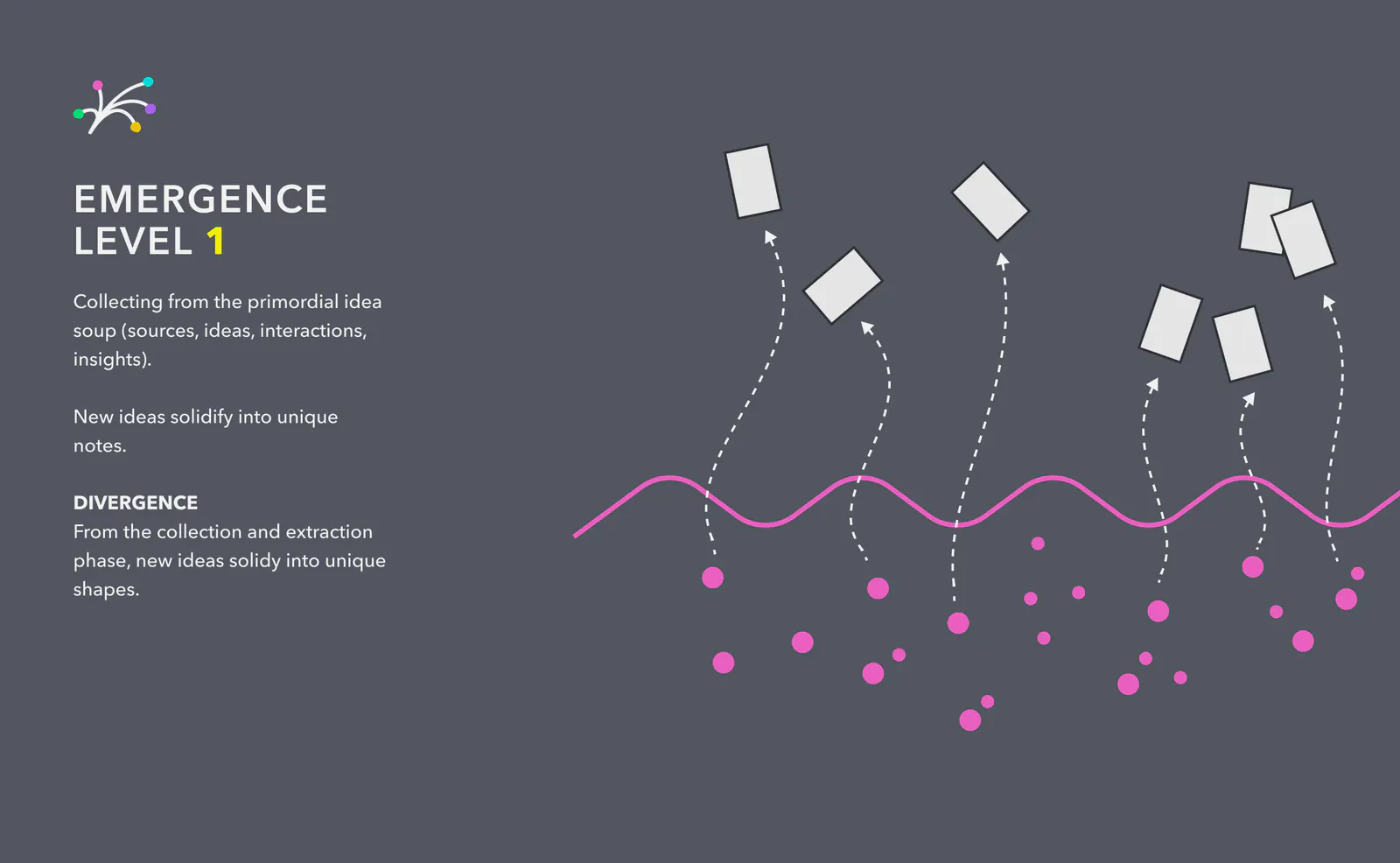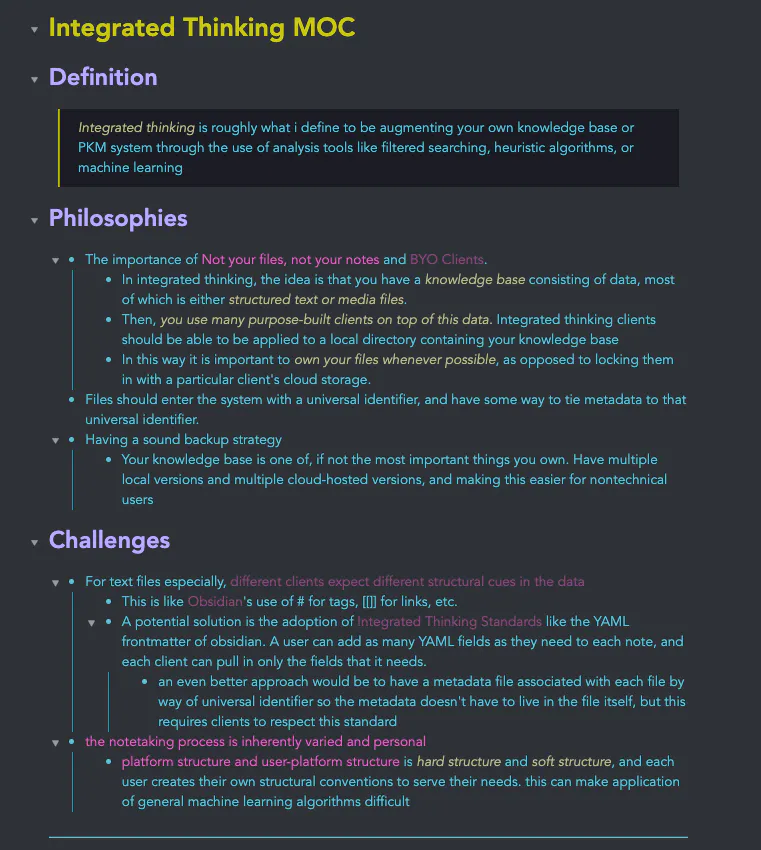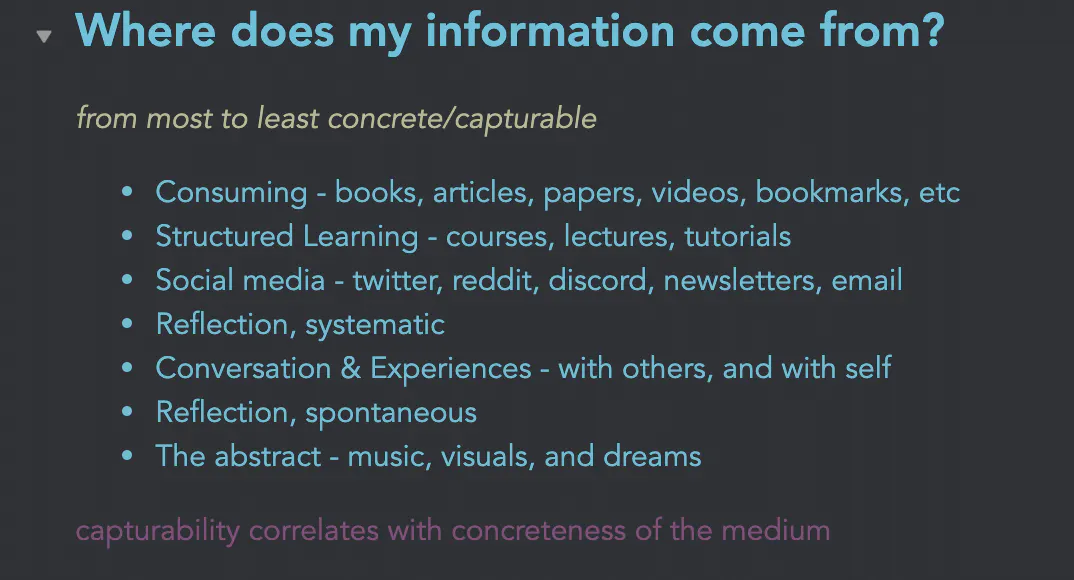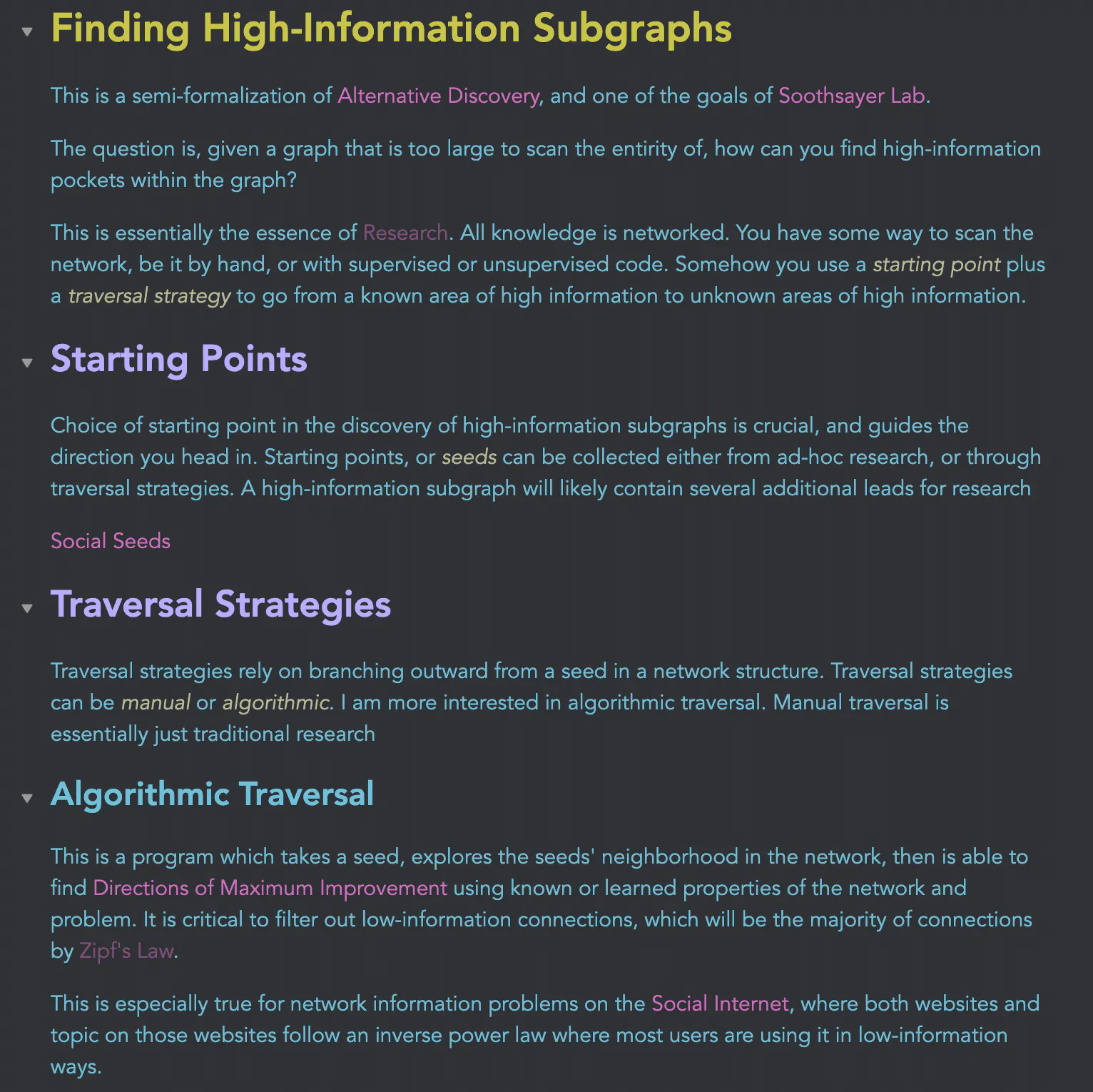10 Favorite Takeaways from Linking Your Thinking Fall '21
October 17, 2021 / 8 min read /
0 Likes •
0 Replies •
0 Mentions
The Linking Your Thinking Workshop
Recently, I completed the Fall 2021 session of Nick Milo's Linking Your Thinking workshop. It is an Obsidian-centric, cohort-based course centered around a couple of core principles: note-making and maps of content.
Note-making is the idea that instead of taking notes, we should be making them. This implies that we should be working with our most valuable notes often and developing them over time. This is a counterpoint to the more natural approach where we collect and consume as much as possible, and do little with our notes over time beyond collecting them. When you practice note-making, naturally your ideas will shape and emerge over time.

Idea Emergence - Source
Maps of Content, or MOCs, are a complimentary idea. MOCs are higher-level structure notes used to organize our more atomic notes over time. Maps of Content are a fluid, non-essential structure in the knowledge base, as opposed to a more rigid structure like a folder. They enable middle-out thinking, as opposed to the top-down or bottom-up methodologies used by systems which don't employ these fluid structure notes.

One of the MOCs I worked on during the course
Ten Takeaways
Here are 10 of my favorite takeaways from the course, coming from both the course material and conversations with peers and mentors throughout the course:
Important things reveal themselves repeatedly
One of the biggest stressors for anyone interested in taking notes or managing their personal knowledge is that they have to get to inbox zero on everything, and that all things must be read thoroughly, annotated and filed.
As a counterpoint to this, we can operated in controlled chaos, doing only the bare minimum filing and organizing, and trust that important things will pop up many times. Then it becomes a matter of learning to recognize these important things.
Musicians call this 'training your ear' - developing an intuitive sense of what sounds right. As knowledge workers, if we can train our sense of resonance, then anxieties about reading and processing everything perfectly begin to fade away. We chase only what resonates with us.
We oscillate between being open and closed to new information
When we detach from the idea that we need to process everything, we then naturally begin to go through phases of being more open or closed to new information. Sometimes we are in research or exploration mode. We have new rabbit holes to explore, and we need to know what people already think and what has already been said on the subject. But other times, we are in sense-making or exploitation mode, and we need to close the gates to new voices and work with the abundance we already have.
Higher-order notes are a spaced repetition alternative
Making MOCs and structure notes as a habit is an alternative to more traditional spaced repetition methods like Anki. With MOCs, you still get the benefits of encountering important ideas repeatedly over time. But unlike traditional spaced repetition, you also get to encounter these important ideas in a variety of contexts. This is because a note can be connected to any number of MOCS.
This is like hanging a painting in multiple spaces in a gallery to try and find where it looks the best. This places the painting in the presence of other things - light, elevation, and other paintings and furniture. Each new context may bring out something new in the painting itself.
Capturability and concreteness of the medium
The more capturable a medium it is, the more our digital library reflects the insights gathered from that medium.
The most capturable information comes from sources like articles, books, social media, and videos. Then you get into less tangible stuff like reflections, conversations, experiences. Beneath that, you have the more abstract things like music, visuals and dreams.

Thinking about capturability and concreteness
One consequence of this is that it's likely that our note taking systems overrepresent what's easy to capture, and underrepresent what is not. I personally want to spend more time finding ways to get insight from conversation, images, experience, music, and dreams.
Perfectionism is about avoiding negative judgment
Perfectionism can be seen as a defense mechanism against a fear of being judged negatively. The workshop has a focus on sharing your work, no matter how you feel about it or where you are in the process, with trust that it will be received as treated as valid and worthwhile.
"Perfectionism is the belief that if we do things perfectly and look perfect, we can minimize or avoid the pain of blame, judgment, and shame." -Brene Brown
Maps of Content decouple client and data
In software, there is the idea of separating the Client Layer from the Data Layer. This means that there is some data, and the things that interact with the data are not solely responsible for managing the data. This is one of the core design philosophies of Obsidian, in that it is a program that simply works on top of a local collection of markdown and image files. You could use any program that supports markdown to open these files if you decide one day that Obsidian is not for you anymore.
Maps of Content are Client-Data Decoupling on the notes themselves. They do not manage the atomic notes underneath, they simply offer another way of viewing them. Nick calls them a "non-essential supporting structure", which is an elegant way of describing the client in a Client-Data Decoupled scheme.
Append-Only collections vs. Add-Remove collections
There are two main kinds of collections we deal with:
append-only, or collections, which only have information added to them.add-removecollections, which require manual removal of items
One convention I've liked in Obsidian is to manage add-only collections with notes, and manage add-remove collections with tags.
For example, my article ideas list is an add-remove colleciton. I add ideas for articles to it as I think of them, and remove things as they are written. But something like GPT-3 Prompts is a collection I will only ever add information to. Therefore I would keep my article ideas in Obsidian associated with the #ideas/writing tag, and I would keep my collection of GPT-3 prompts in the [[GPT-3 Prompts]] note.
A Link attracts attention
Using links in your notes is like using salt when you're cooking. You should probably be using it, but you have to use the right amount. Too few links leaves a note isolated with no flavor at all. [[Too]] many [[Links]] and [[You]] don't know what to [[Look At]]. The flavor is spoiled.
A byproduct of having a well-linked note is that you have effectively summarized it for yourself. On a return visit, you can see what pieces are the most important just by seeing what links exist to elsewhere in your system.

A well-linked note from my system
Idea Overload
As you abandon note-taking in favor of note-making, a new problem arises. Now instead of not having enough time to read all the interesting articles and books you save, now you don't have enough time to explore all the interesting ideas you have. Instead of Information Overload, now you deal with Idea Overload. Instead of a 20-article pile-up in Instapaper, now you have a 20-note pile-up under the #status/new tag.
The answer seems to be: acknowledge there will never be enough time for everything, and trust your intuition on what's most important.
Sutton's Bitter Lesson & Note-Making
Sutton's Bitter Lesson states that "general methods that leverage computation are ultimately the most effective, and by a large margin" when it comes to AI research and development. This means that systems using human-created manual decision rules almost always get trumped by pure computation systems that use more data and more compute in the long-run.
When we do note-making, we may be tempted to spend lots of time and effort on manual organizing, linking, and tagging. This may be more effective than saving everything and leaving it to rot for getting value in the short-term. However, it may ultimately less effective than skipping the manual linking and tagging and letting AI sort our pile of ideas in the long run. It will be interesting to see what our tools for note taking and knowledge management look like a decade from now.
Fetching Replies...
Do you have any questions, comments or simply wish to contact me privately? Don’t hesitate to shoot me a DM on Twitter.
Want more jmill in your life?
Get a monthly email from me about my ideas, as well as exclusive previews of upcoming articles and projects.
Here are 10 of my favorite takeaways from the Linking Your Thinking Workshop, Fall '21.